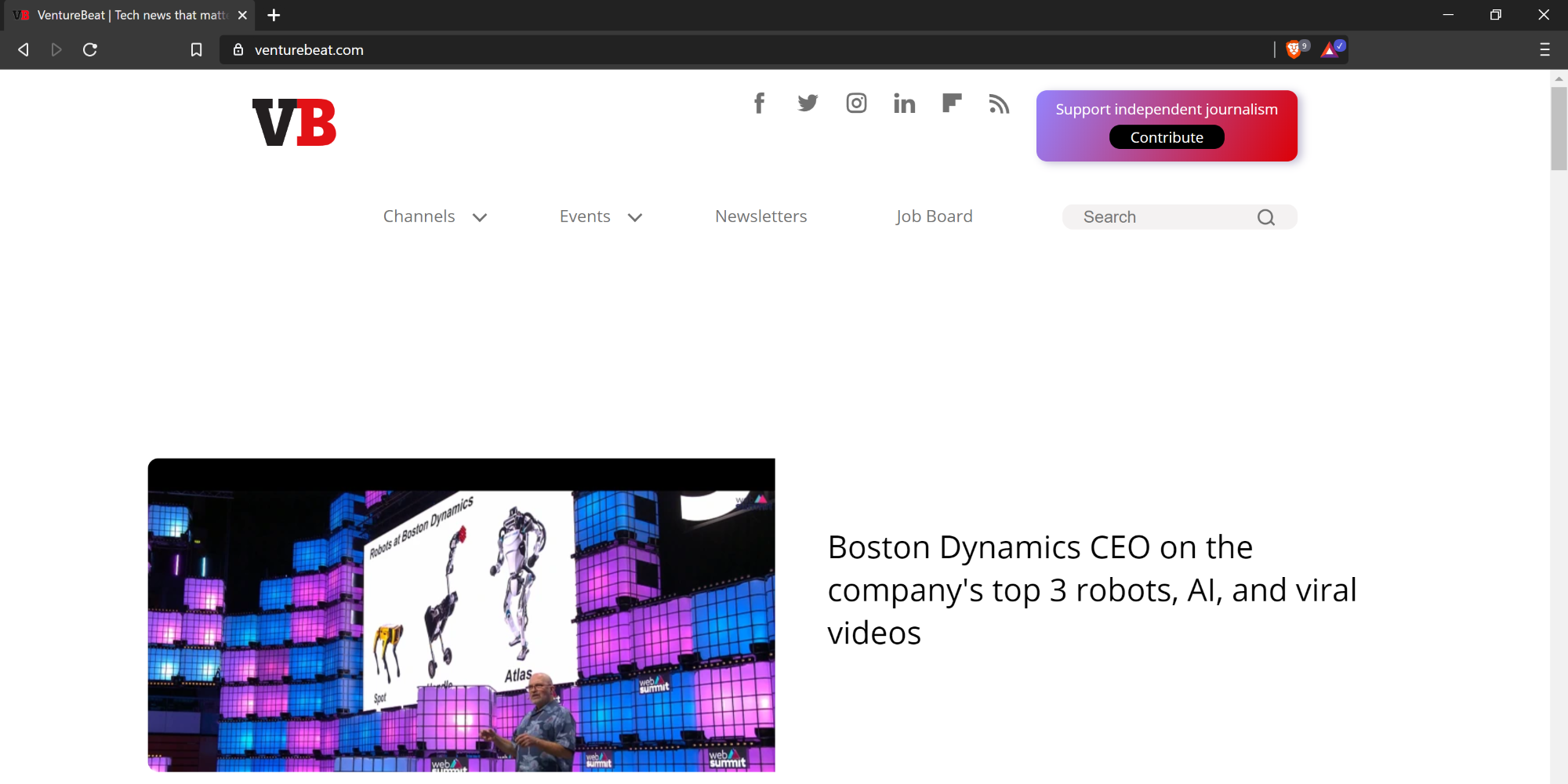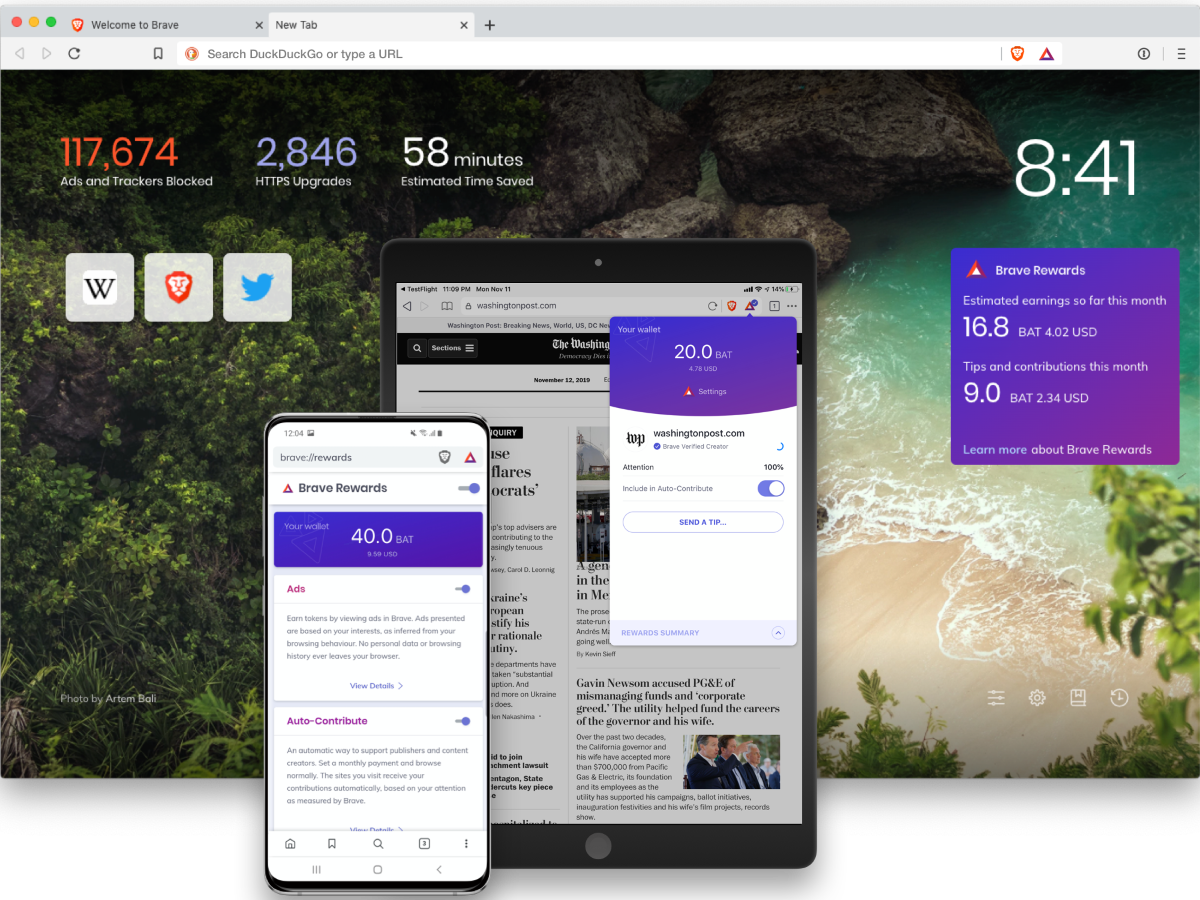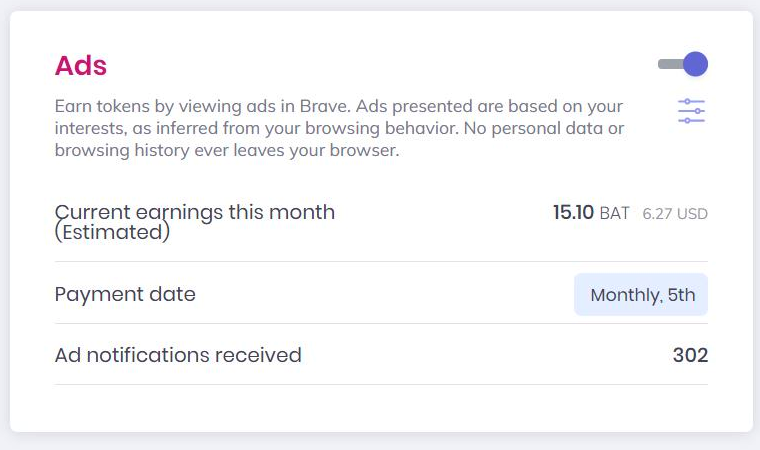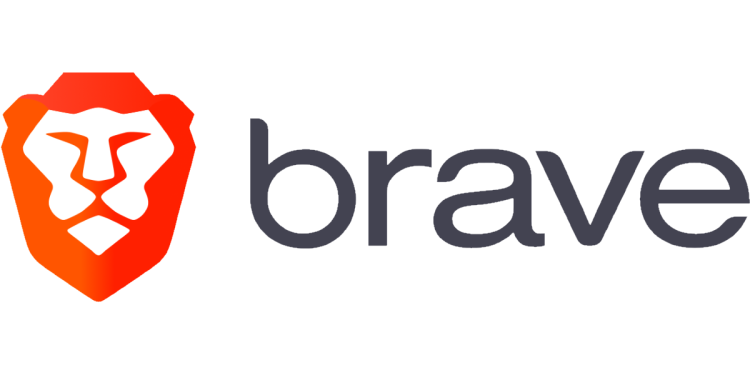Brave Software today launched its Brave browser out of beta. Brave version 1.0 has the same pitch: an open source browser that blocks ads but also offers a blockchain-based digital advertising platform. You can download Brave 1.0 now for Windows, macOS, Linux, Android, and iOS in 52 languages.
Brave Software is led by CEO Brendan Eich, best known for inventing JavaScript and cofounding Mozilla. The company launched Chromium-based open source browser Brave in January 2016. Despite being in beta for almost four years, Brave has garnered 8.7 million active users and 3 million daily active users, Eich told VentureBeat. For comparison, Chrome has over 1 billion active users, while Firefox has about 250 million active users. Still, this is a notable achievement given how difficult it is to differentiate a browser nowadays. Even more notable is that Brave has pushed other browsers to follow in its path of cleaning up the web.
Brave features
Brave aggressively blocks everything it can. On by default, the Brave Shields feature blocks third-party ads, trackers, autoplaying videos, and device fingerprinting. Brave claims its browser as a result loads websites up to 3 to 6 times faster than competitors. It also drains less battery life and uses less memory.

June 5th: The AI Audit in NYC
Join us next week in NYC to engage with top executive leaders, delving into strategies for auditing AI models to ensure fairness, optimal performance, and ethical compliance across diverse organizations. Secure your attendance for this exclusive invite-only event.
Major browsers have adopted Brave’s approach with trackers, autoplaying videos, and device fingerprinting, or are in the process of implementing similar approaches. None of them blocks ads by default, however; so Brave continues to enjoy a noticeable performance edge out of the box.
Brave Rewards and Brave Ads
Brave Rewards is the company’s attempt to fund the web. You can use it to support your favorite publishers and content creators by sending Basic Attention Tokens (BAT) as tips, either directly as you browse or via recurring monthly payments. The program is currently supported by over 300,000 websites, a tiny but not insignificant fraction of the web. (Full Disclosure: VentureBeat is one of them, and we’ve earned about $175 to date.)

Brave Ads goes further with a blockchain-based advertising model. First announced in June 2018, the digital ads platform rolled out in April to all Brave users. In return for your attention, you receive 70% of the gross ad revenue, paid out with BAT. Brave keeps the remaining 30%. Brave Ads first rolled out to desktop, then Android, and now iPhones and iPads. When Brave Ads was still in beta, you had to opt into Brave Rewards and then turn on Ads. Now, when you opt into Brave Rewards, Brave Ads is enabled by default.

Since Brave Software can’t use tracking, Brave pushes ad catalogs (one per region and language) to your device. As you browse, Brave learns about your interests based on the content of sites you visit. It then locally matches the best available ad from the catalog. Using machine learning, Brave Software claims its ad system can deliver ads “at the right time” based on the user’s “behavior in the browser.”
We asked Eich about adoption of ads in the ad-blocking browser. The company has run over 475 ad campaigns (averaging three to five ads) to date. Major brands include Intel, Pizza Hut, and Home Chef. More impressively, between 10% and 20% of Brave users (depending on the platform) have opted into Brave Ads in areas where ads are available. Brave Ads has so far delivered a 14% CTR (industry average is about 2%). Given the 70% revenue share given to Brave users, they’re making about $5/month in BAT. Brave Ads has rolled out to 22 more regions today — so we’ll check with Eich in a few months to see where the numbers are.

